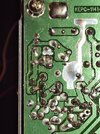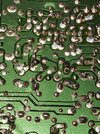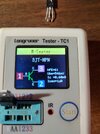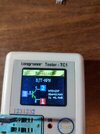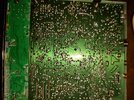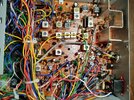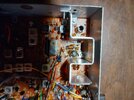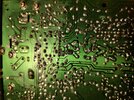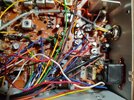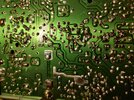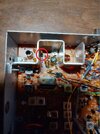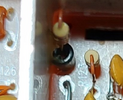Got one of these brand new Cobra 29 LX Max radios on the desk today with a no transmit issue.
Collector of Driver in receive mode is around 16v, hmmm...
Collector of driver in transmit mode is 13.4v.
Collector of Final in receive mode is around 6v.
Collector of Final in transmit mode is around 12.5v.
Base and emitter of both the driver and the final in either mode (xmit or receive) stays at 0v, hmmm....
Replaced final and driver with new ones, same result.
Replaced them both again, still same result.
Already checked:
R58, R56, R123, R55, R54, R53, D8...
All tested good with proper values.
The owner said he was talking on it one night and heard what sounded like a toothpick snapping in half, then the transmit quit immediately.
Radio transmit light does come on when keying the mic.
Display shows "Transmitting" when the mic is keyed, but shows no output on the S/RF meter.
My monitor radio shows full scale with good modulation when I key this 29 up on the same channel.
Seems like a bad final or driver, but I've already replaced both twice with new ones, and both sets of new ones I tested on the tester showed as good BJT's with good Hfe's, even the originals that I took out tested as good BJT's with good Hfe's.
No burnt traces, no cut traces, nothing looks blown up, looks like brand new. No mods whatsoever in this radio, all original parts still intact.
Collector of Driver in receive mode is around 16v, hmmm...
Collector of driver in transmit mode is 13.4v.
Collector of Final in receive mode is around 6v.
Collector of Final in transmit mode is around 12.5v.
Base and emitter of both the driver and the final in either mode (xmit or receive) stays at 0v, hmmm....
Replaced final and driver with new ones, same result.
Replaced them both again, still same result.
Already checked:
R58, R56, R123, R55, R54, R53, D8...
All tested good with proper values.
The owner said he was talking on it one night and heard what sounded like a toothpick snapping in half, then the transmit quit immediately.
Radio transmit light does come on when keying the mic.
Display shows "Transmitting" when the mic is keyed, but shows no output on the S/RF meter.
My monitor radio shows full scale with good modulation when I key this 29 up on the same channel.
Seems like a bad final or driver, but I've already replaced both twice with new ones, and both sets of new ones I tested on the tester showed as good BJT's with good Hfe's, even the originals that I took out tested as good BJT's with good Hfe's.
No burnt traces, no cut traces, nothing looks blown up, looks like brand new. No mods whatsoever in this radio, all original parts still intact.

